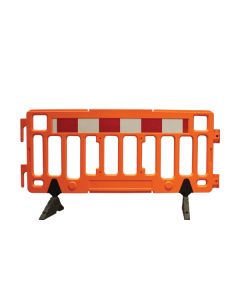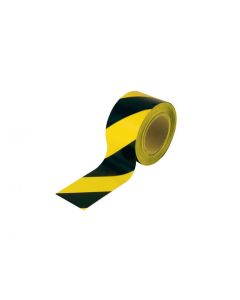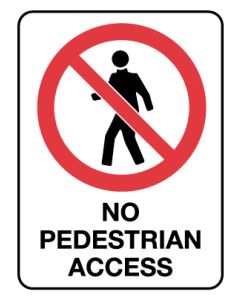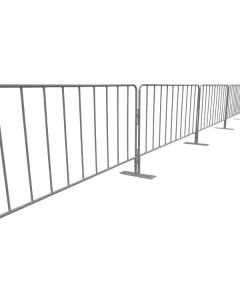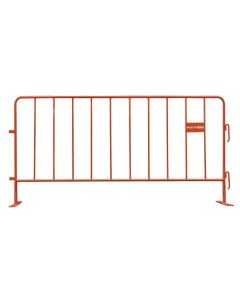Construction site pedestrian safety: How to separate people and plant
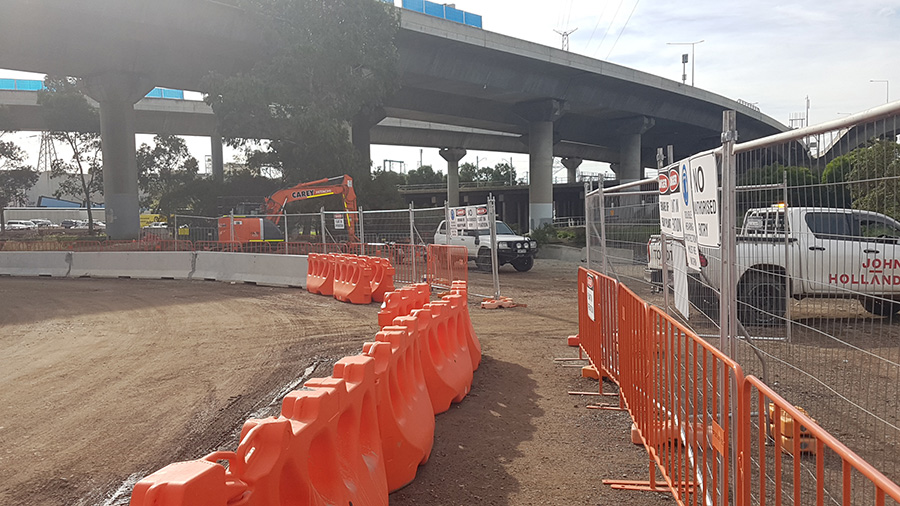
Staying safe around moving equipment: How to separate people and plant on site
When you think about it, construction sites are pretty dangerous places. Despite our rigorous Workplace Health & Safety laws, staff training and safety procedures, many construction crews still have to work in some of the toughest environments, close to equipment that can cause serious harm.
A lot of worksites require pedestrians and heavy vehicles to work in close proximity and sometimes there is just no getting around it.
If you routinely work on sites with moving vehicles, plant and equipment, it’s critical to have construction site pedestrian safety procedures in place to ensure that everyone is protected.
Why pedestrian safety needs constant attention
Within your site, there could be a host of different people on foot – pedestrians, that is – performing different functions. From your core crew to subcontractors, visitors, delivery drivers and couriers, cleaning crews, after trades and more – all of whom should be site inducted and be aware of the risks in that particular environment.
However, is that enough?
Familiarity with the work site is an important part of understanding where risks can come from and where to be extra vigilant. For people that are visiting the site temporarily, or have not spent much time in the work zone, that familiarity may not have developed.
On the other hand, for workers who are on the project site day in, day out, becoming overly familiar with a site can tend to have a negative effect, when people ‘let their guard down’ or become complacent about working close to hazards like excavators, cranes and work trucks.
Common ways to manage vehicles and pedestrians on construction sites:
- Minimise vehicle movements by setting up the workplace with practical access roads
- Ensure a traffic controller (perhaps equipped with a Portaboom remote controlled boom gate) directs any vehicles that are entering or exiting the site
- Minimising the need for vehicles to reverse, by providing turning circles or one way traffic systems throughout the site
- Using signage as thoughtfully as possible to ensure clear and accurate guidance
- Creating exclusion zones so that vehicles are not in proximity to lunch rooms or site offices
- Installing barrier tape, chain, bollards, fencing (or a combination of these) around any plant that whilst it is operating
- Ensure crossings are clearly marked and confined to certain areas
- Use tough outdoor mirrors installed around blind corners and potential black spots
- And of course, be seen – always wear your high vis clothing!
How to manage construction site pedestrian safety
Anyone on foot needs to be protected as much as possible from moving machinery and equipment, vehicles and other site hazards – no matter how long they are spending on site.
For this reason, often it’s best to be over-cautious when it comes to construction site pedestrian safety. Don’t assume that someone will take the safest route if there is a shortcut available – even if they ‘should know better’.
Make it foolproof, make it obvious and make it practical, and both workers and visitors to site will find it simple to choose the safe route every time.
Keeping workers and pedestrians in designated areas and away from hazards can be achieved with the help of crowd control barriers, bollards, barricade tape and of course, lots of signage.
How to easily create walkways on construction sites
By creating a simple and straightforward accessway, you make it easy for people to choose the correct path. Where possible, create walkways that are as direct as possible so people can get around site efficiently. Observe how people move around the site and ensure walkways, gates and crossings are placed in practical areas. It is easy to create walkways using items like crowd control barriers or the more sturdy water-filled barriers.
Water filled barriers like the Trafix are ideal for construction zones, carparks and other lower speed zones. When filled with water their considerable weight provides safe separation between low speed vehicles and pedestrians.
Crowd control barriers are a great solution that can be used in conjunction with water filled barriers. These simple steel barricades easily slot together and fold down for easy storage. They can be set up quickly and efficiently, and are easy to move as the site needs change. Measuring 1.1m high, crowd control barriers are not particularly easy to ‘hop over’ like some other temporary barricades. This means they are more likely to encourage pedestrians to use the pathway you have created on site rather than taking a short cut.
 How to create exclusion zones with barriers, tape and signage
How to create exclusion zones with barriers, tape and signage
Sometimes T-top bollards and barrier tape is all that is needed to ensure pedestrians keep away from stationary equipment, such as excavators that are switched off and powered down. Stringing hazard, caution or ‘do not enter’ tape across a series of bollards is a cheap and easy way to create a no-go zone.
At the other end of the scale, more permanent site areas such as factories and depots might benefit from the installation of permanent barriers and fencing. These are often seen in large warehouses to keep forklifts away from workers and visitors. Floor hazard tape can be used to great effect too, directing people along pathways around the site and ensuring that pedestrians don’t stray from the path.
Signs for construction site walkways
Your construction site pedestrian safety plan wouldn’t be complete without signage. Signs are the simplest and most direct way to communicate the potential risks to everyone, and advise how to move around the site safely.
Because construction signs generally feature pictograms as well as text, they are easy to read by everyone. Some common signs that are available through Jaybro include No Pedestrian Access signs, No Entry decals, and more. At the entrance to site, ensure visitors and pedestrians head to the site office with an ‘All Visitors Must Report to Site Office‘ sign.
Ensuring you’ve got adequate signage will help people keep to marked paths, follow instructions and procedures, and generally help to create a safer site overall. The best option however is always to refer to your WHS representative, your local workplace safety authority, and the standards and codes that are relevant to your industry.
Want more construction site pedestrian safety tips?
Jaybro is a leader in site safety and site traffic management solution. Get in touch with our friendly team if you need some advice on the right fencing, bollards, signage and safety equipment for your next project.
This information is provided as an introductory guide only and does not constitute professional advice. Ensure you make your own independent enquiries at your workplace before deciding if a particular product is right for you. Consult the regulations and standards applicable to your area and check with your workplace health and safety representative for further information. Jaybro does not warrant the accuracy, content, completeness or suitability of the information on this site (or any site owned by the Jaybro Group) for your individual purposes. Any price or saving claim is correct at the time of publishing, and subject to change without notice.
 Sign In
Sign In 

